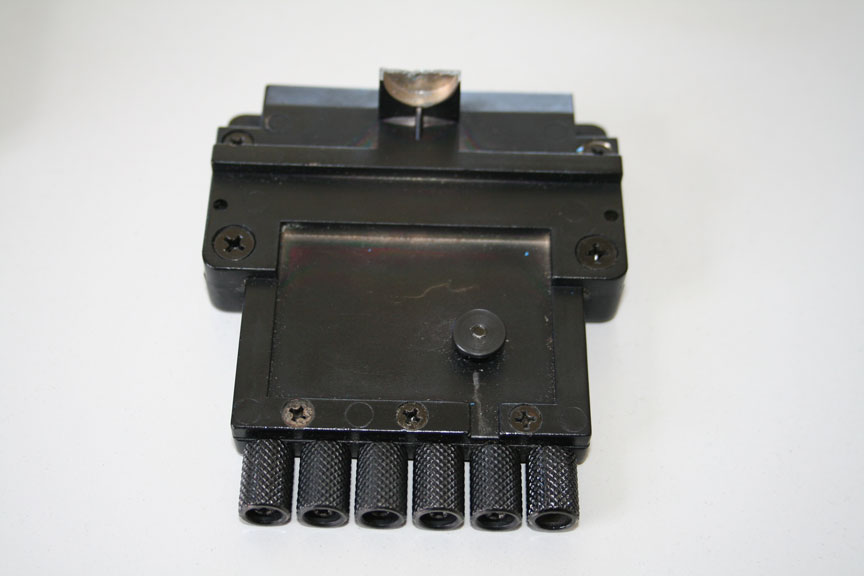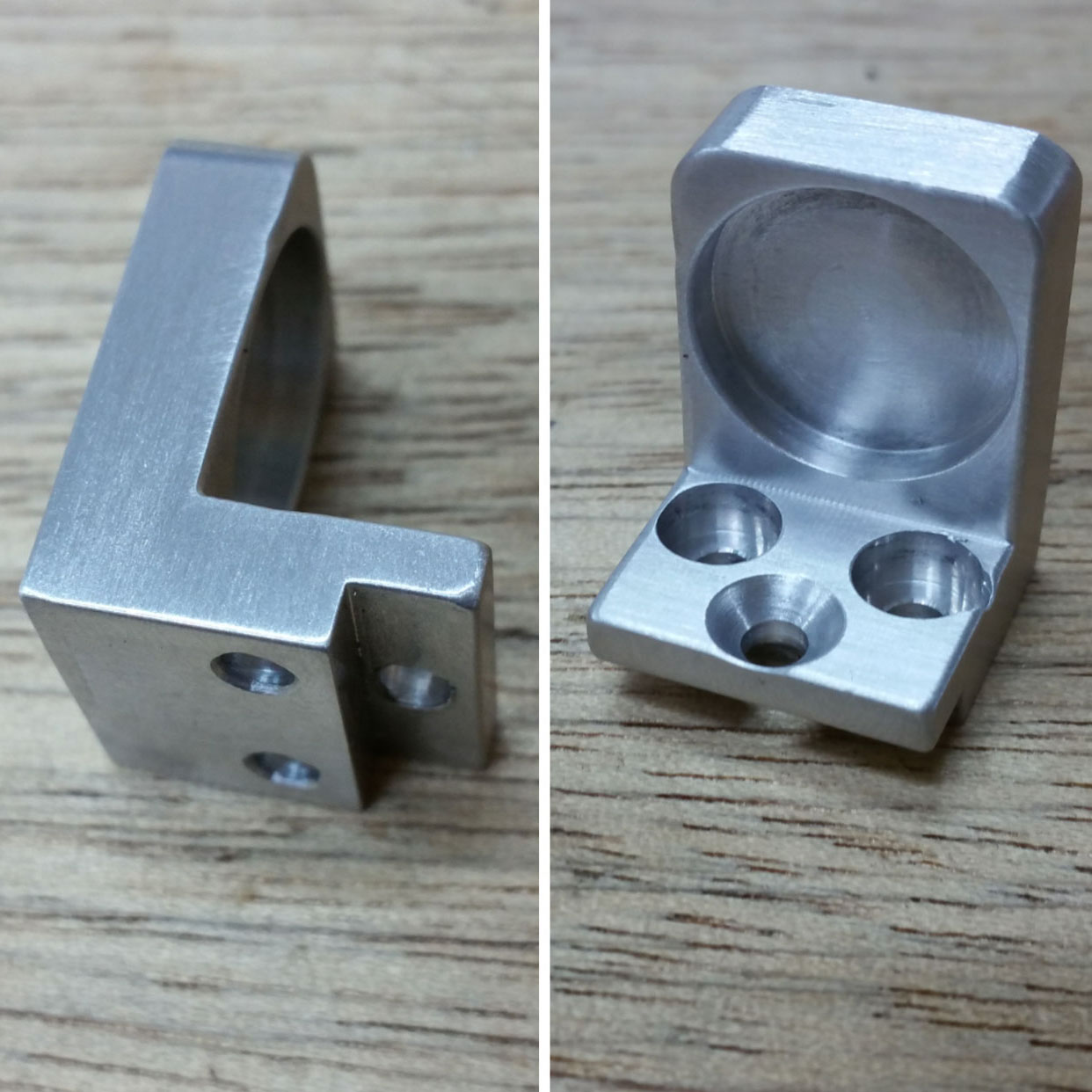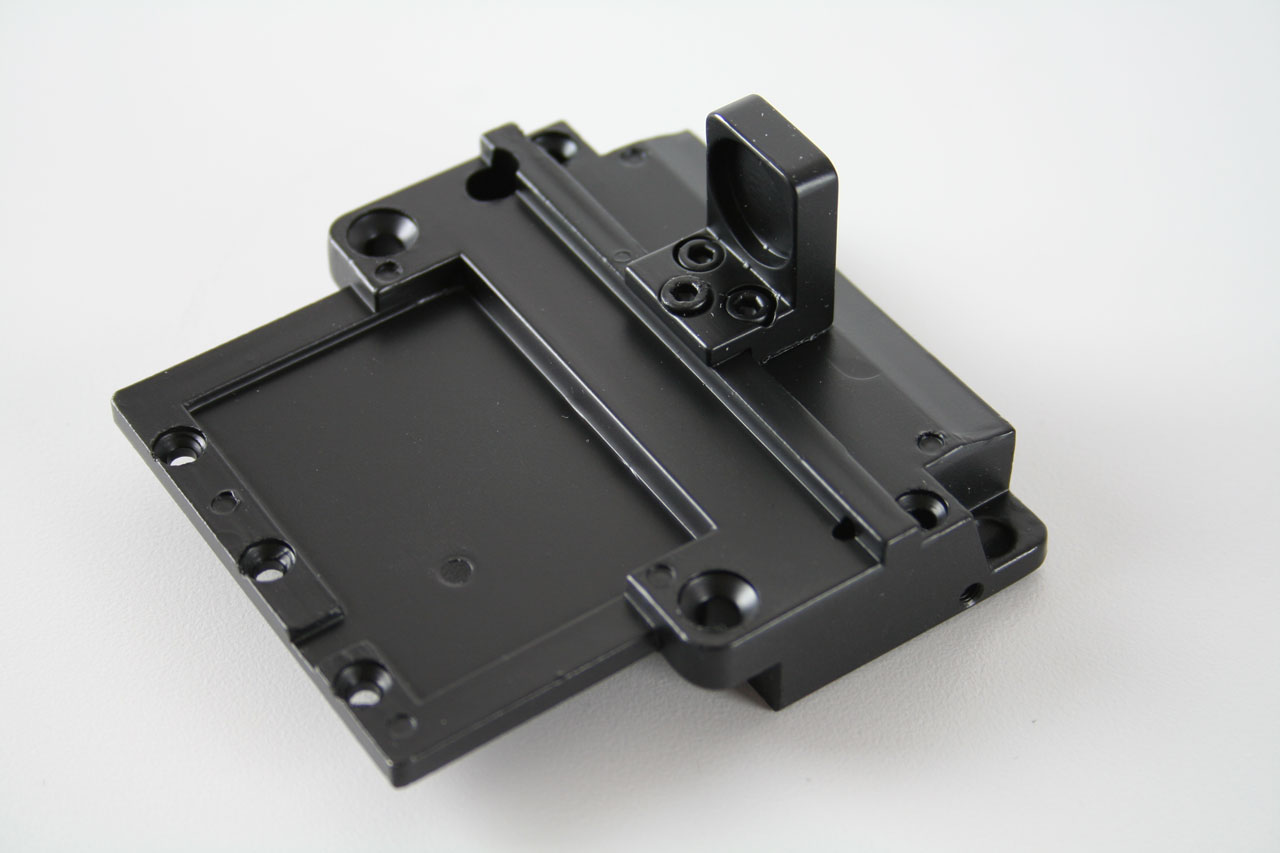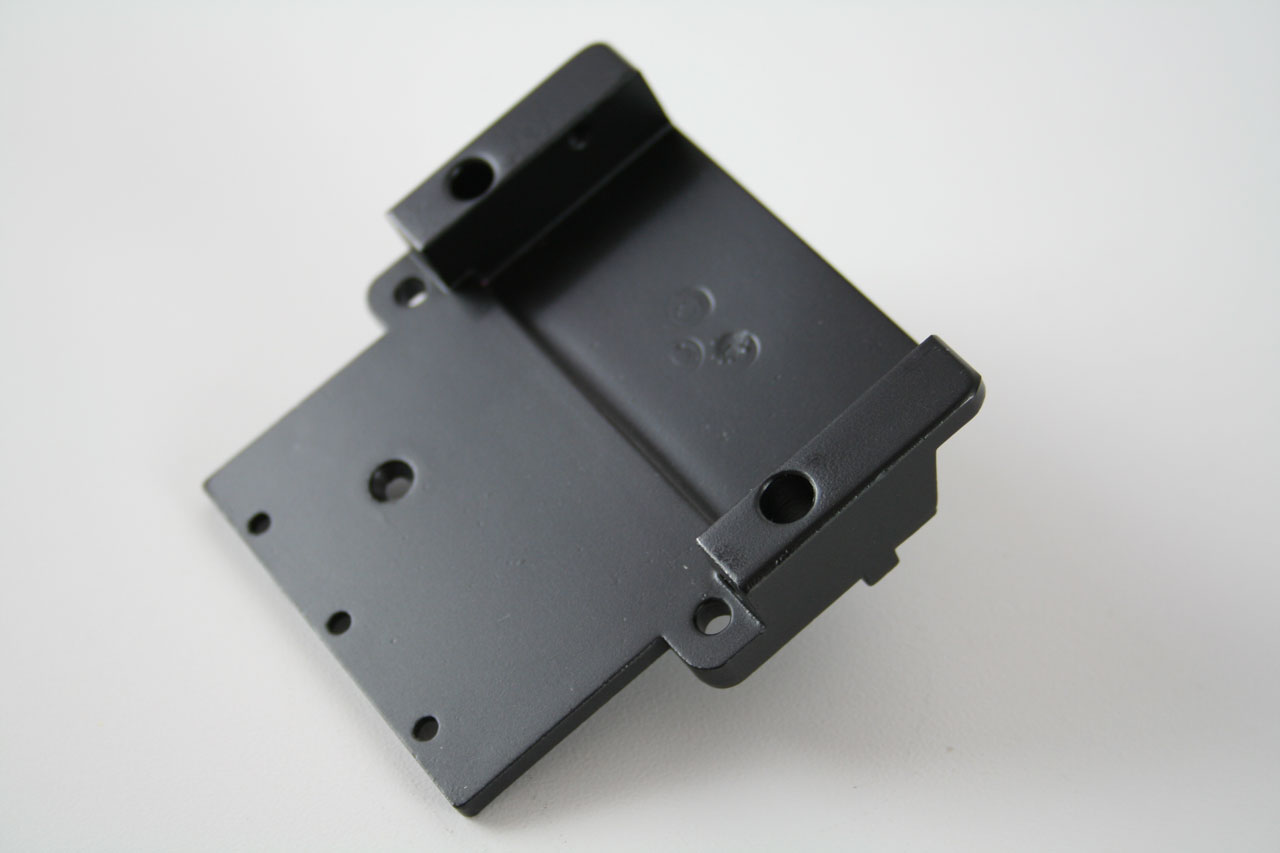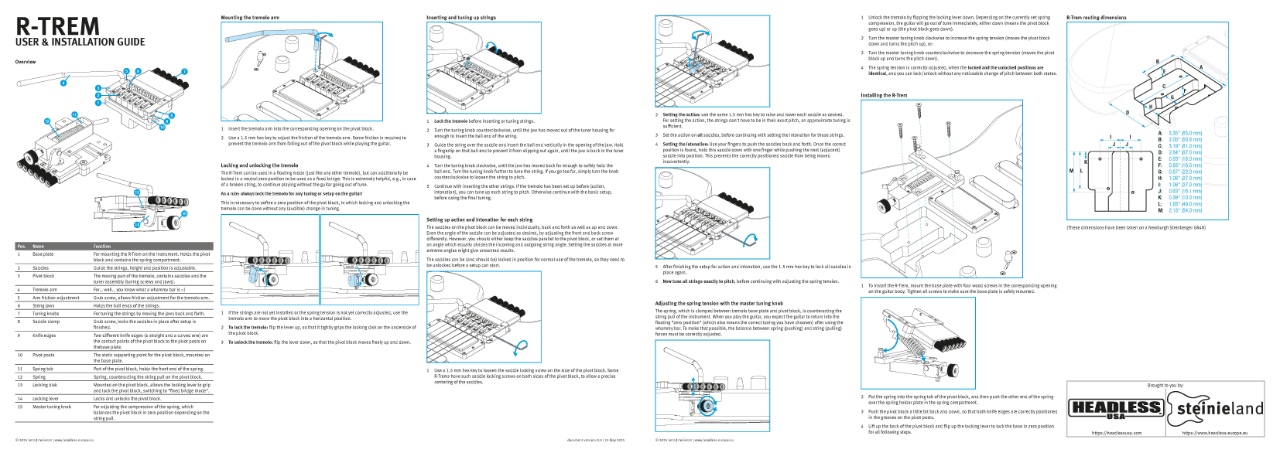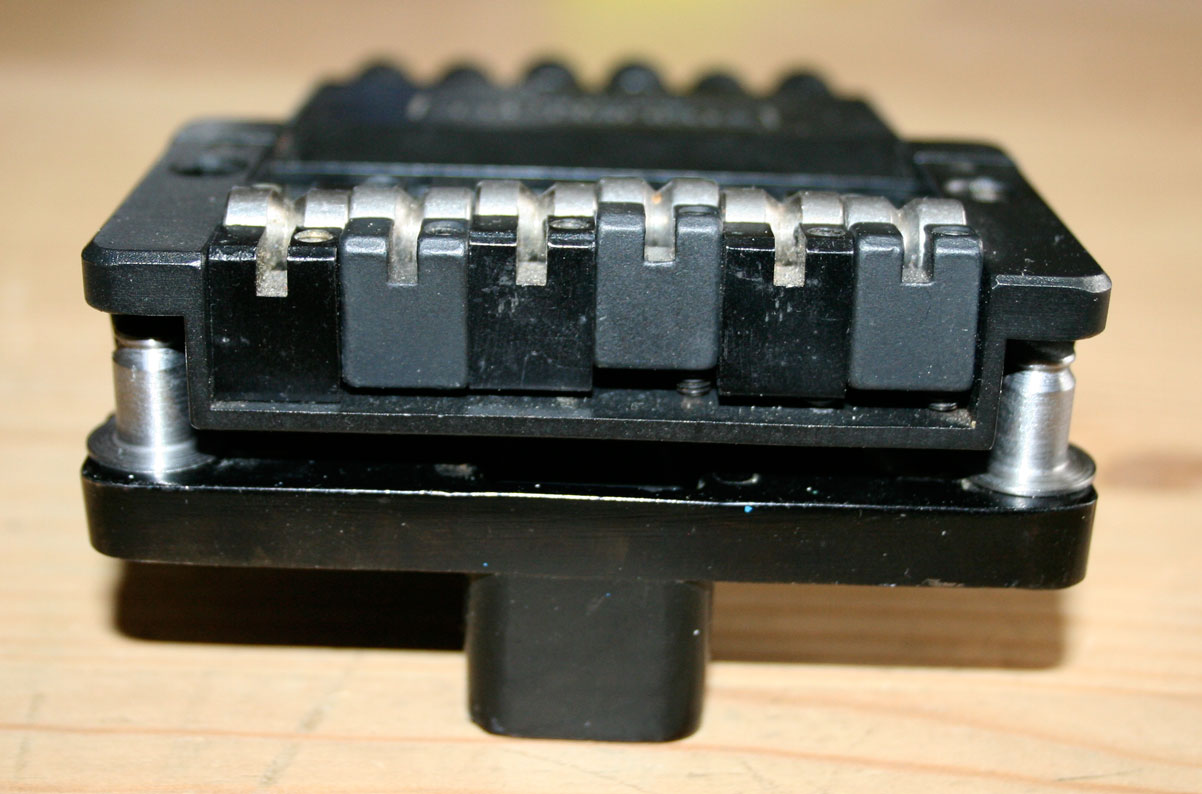R-Trem information
This section contains technical information and - if available - parts information for the R-Trem.
This is the R-Trem User & Installation guide you've always been looking for. It didn't exist yet, so I created it.
Not much to describe here: a trem arm for the Steinberger R-Trem (which can also be used on the KB trem).
This trem arm can be ordered here.
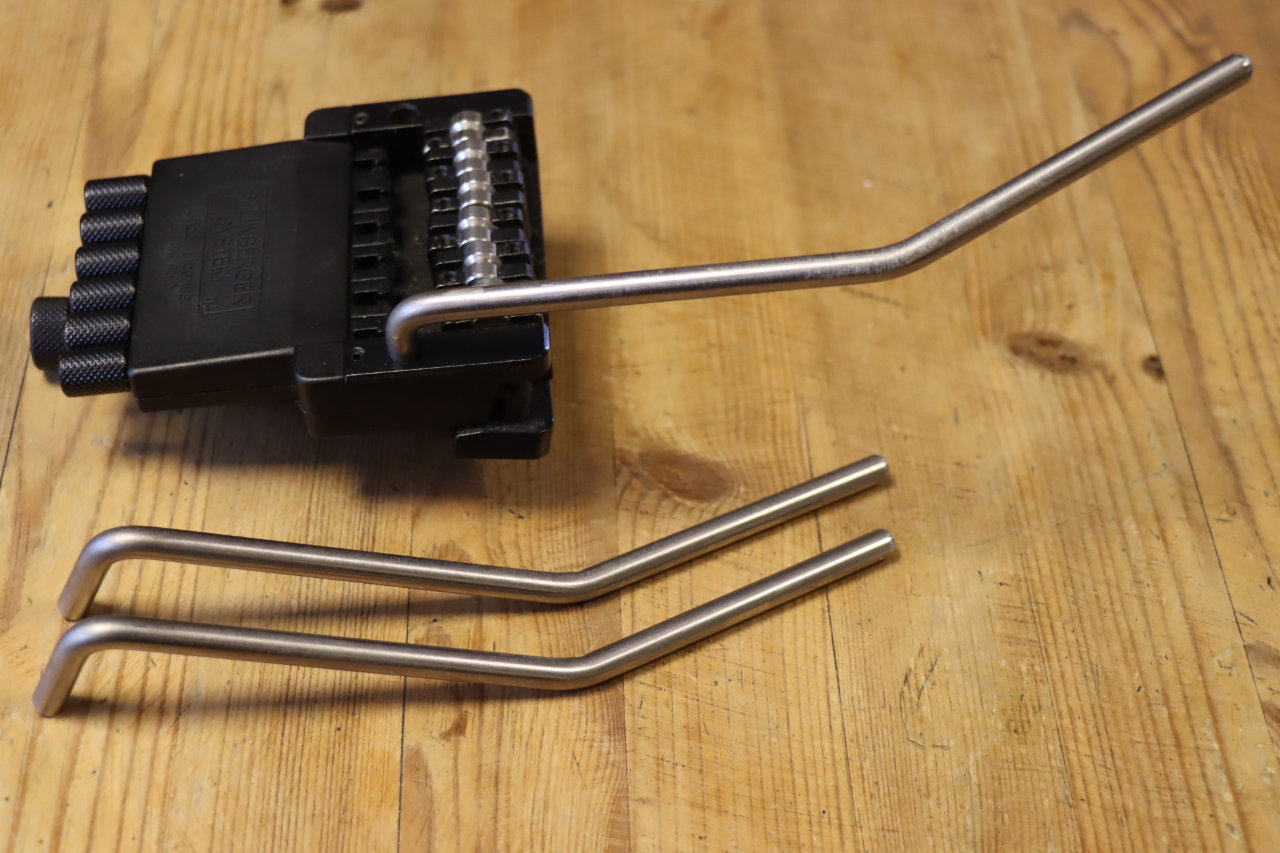
These steel posts have been proved and tested on a large number of Steinberger R-Trems worldwide. Although this trem doesn’t have the “bent posts syndrome” to the same degree as the KB Trem, bent/leaning posts can and do happen from time to time. In many cases the the original posts arenʼt bent, but are leaning forward because the constant string pull makes the sharp edges of the hexagonal post dig into the base plate.
Especially for use with heavier gauge strings (which leads to stronger forces on the posts) these steel posts are highly recommended. These steel posts better withstand the forces, due to a better material and the additional supporting “foot”, which also prevents the post from cutting/digging into the base plate. Please note, that the KB Trem posts and the R-Trem posts are of different length, so they are not interchangeable.
You can download the Steinberger_R_Trem_Maintenance_and_Posts.pdf, which includes some tips for installation and maintenance.
NOTE: some very early Hohner R-Trems (and only these) may have an M4 thread (4 mm) for the posts, instead of an M5 thread (5 mm), which is standard on all Steinberger and later Hohner R-Trems. If you have such a trem, you will either have to redrill and retap the thread, or my posts won‘t fit. So make sure to check the thread size before ordering.
These posts can be ordered here.
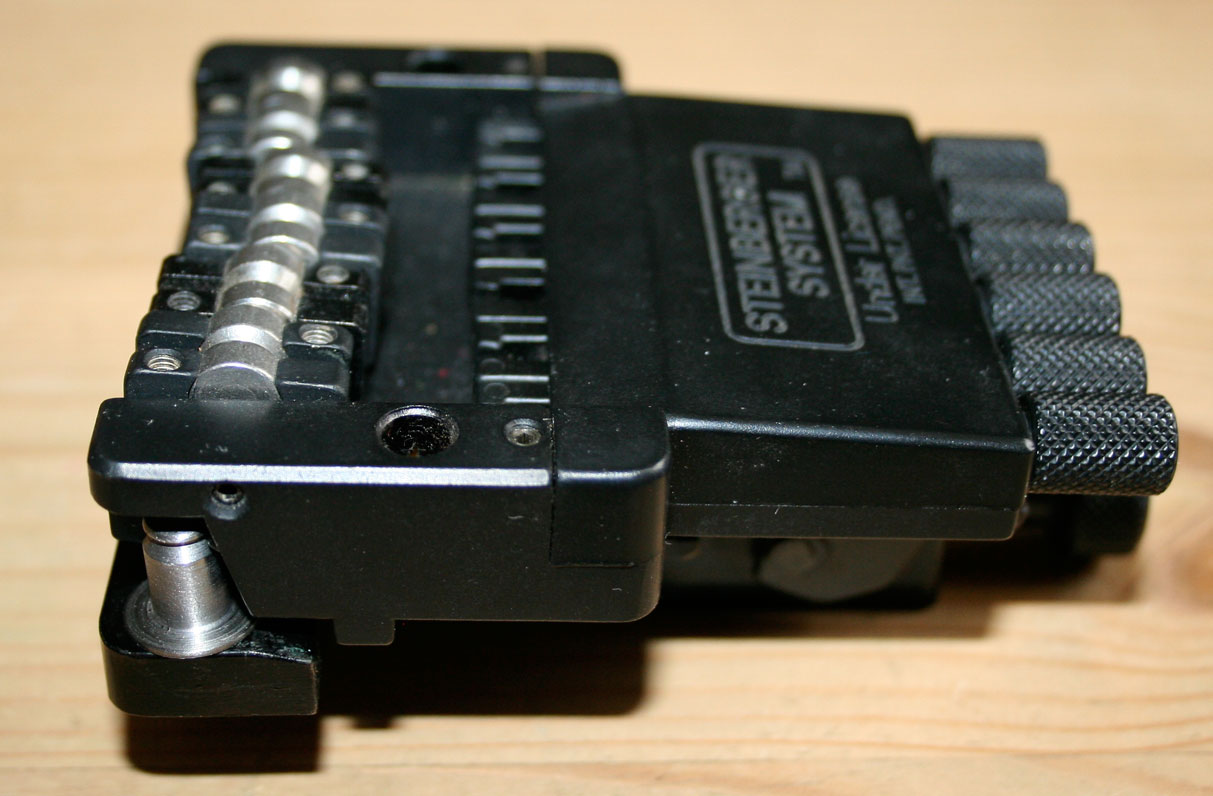
Just to clear up a very common misunderstanding: it is correct that the R-Trem has two different knife edges, one with a straight and one with a curved edge. The curved edge is not damaged or worn, but keeps the whole tremolo top in position horizontally. With two straight edges the top could move sideways. Unfortunately I donʼt know of any source for these knife edges, but they rarely need a replacement anyway. Theyʼre hardened steel working on not hardened pivot posts, so major damage is unlikely.
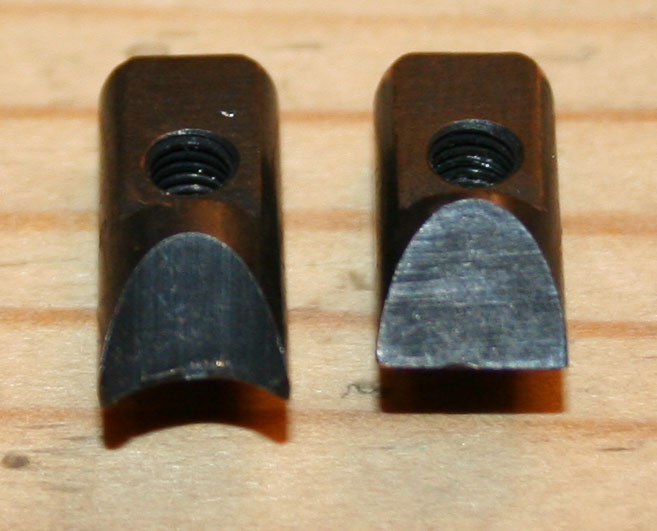
On Hohner R-Trems there are two different types of a clamping mechanism, which holds the trem arm in place. The picture below shows the difference between both. R-Trems on all Steinbergers (including Spirits) all have the later mechanism with the grub screw and the simple trem arm without a groove.
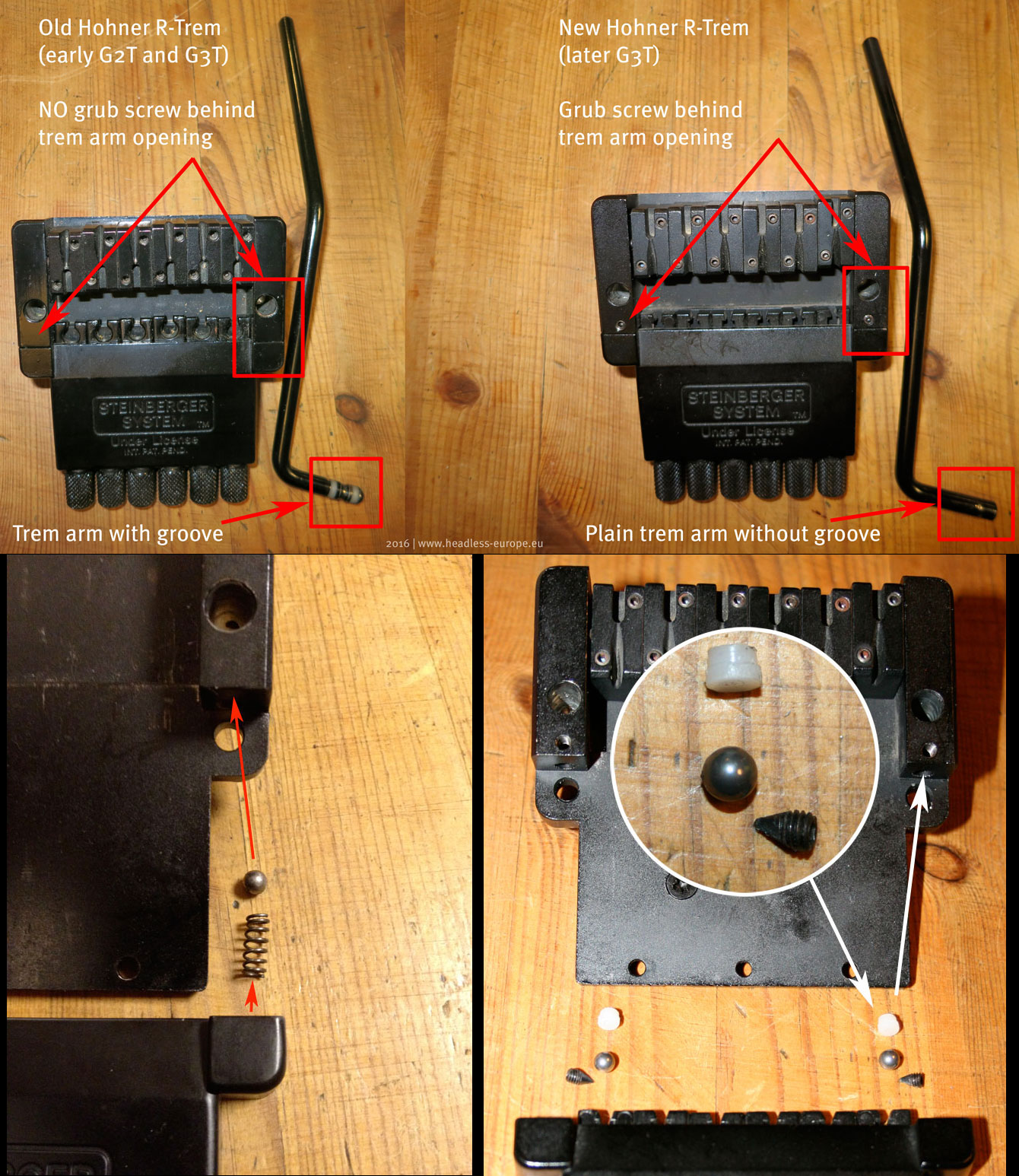
If you've got an R-Trem with a bent or broken spring tab, there's a professional solution now. The spring tab will completely be replaced by a milled part, which keeps your original R-Trem working as good as new, just more durable. For contact details scroll down.
